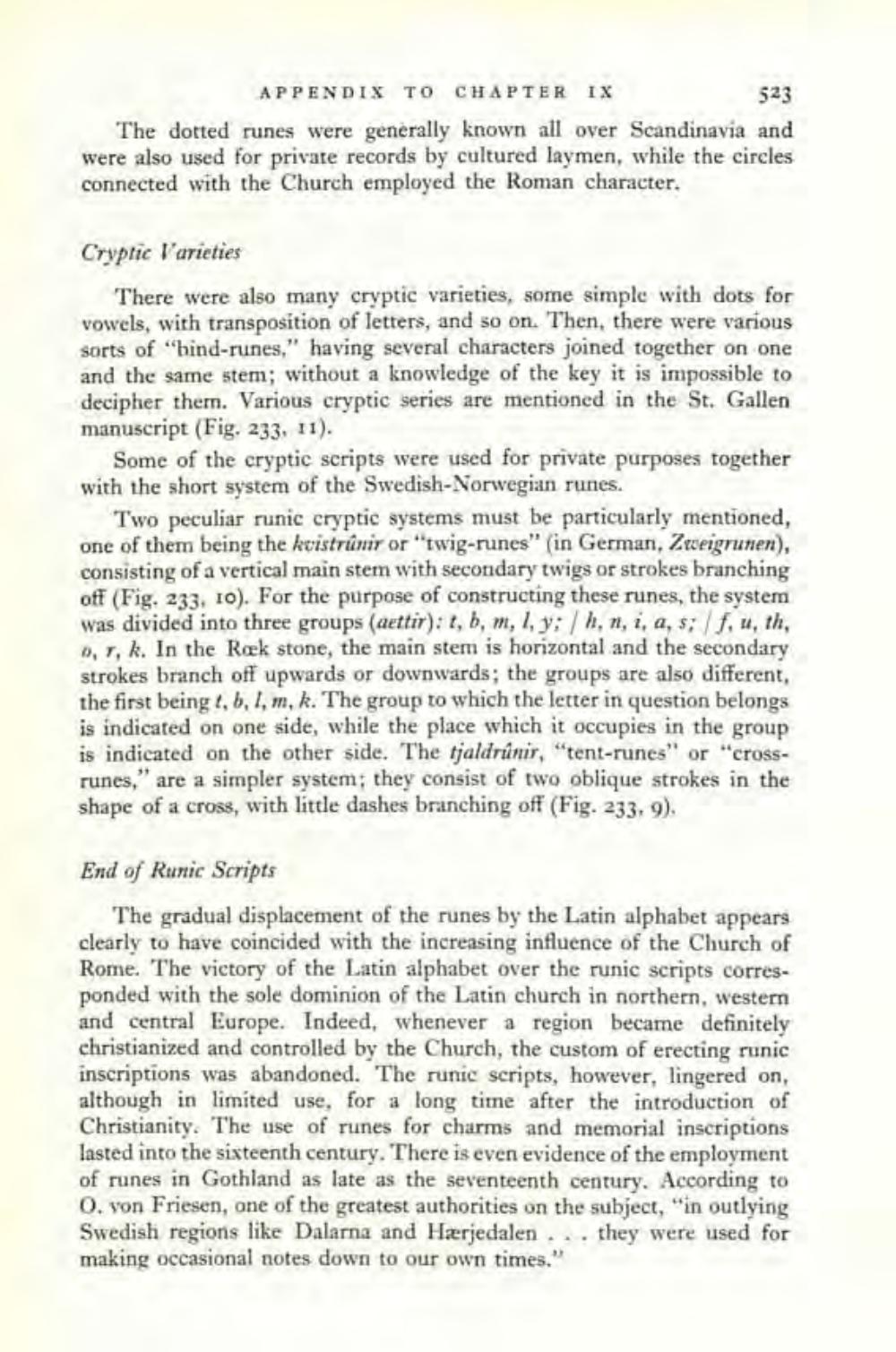________________
523
APPENDIX TO CHAPTER 1X The dotted runes were generally known all over Scandinavia and were also used for private records by cultured laymen, while the circles connected with the Church employed the Roman character.
Cryptic l'arieties
There were also many cryptic varieties, some simple with dots for vowels, with transposition of letters, and so on. Then, there were various sorts of "bind-runes," having several characters joined together on one and the same stem; without a knowledge of the key it is impossible to decipher them. Various cryptic series are mentioned in the St. Gallen manuscript (Fig. 233, 11).
Some of the cryptic scripts were used for private purposes together with the short system of the Swedish-Norwegian runes.
Two peculiar runic cryptic systems must be particularly mentioned, one of them being the kvistrúnir or "twig-runes" (in German, Zweigrunen), consisting of a vertical main stem with secondary twigs or strokes branching off (Fig. 233, 10). For the purpose of constructing these runes, the system was divided into three groups (aettir): 2, b, m, l, y: / h, n, i, a, $; /f, u, th, 0,5, k. In the Ræk stone, the main stem is horizontal and the secondary strokes branch off upwards or downwards; the groups are also different, the first being t, b. I. m, k. The group to which the letter in question belongs is indicated on one side, while the place which it occupies in the group is indicated on the other side. The tjaldrúnir, "tent-runes" or "crossrunes," are a simpler system, they consist of two oblique strokes in the shape of a cross, with little dashes branching off (Fig. 233,9).
End of Runic Scripts
The gradual displacement of the runes by the Latin alphabet appears clearly to have coincided with the increasing influence of the Church of Rome. The victory of the Latin alphabet over the runic scripts corresponded with the sole dominion of the Latin church in northern, western and central Europe. Indeed, whenever a region became definitely christianized and controlled by the Church, the custom of erecting runic inscriptions was abandoned. The runic scripts, however, lingered on, although in limited use, for a long time after the introduction of Christianity. The use of runes for charms and memorial inscriptions lasted into the sixteenth century. There is even evidence of the employment of runes in Gothland as late as the seventeenth century. According to 0. von Friesen, one of the greatest authorities on the subject, "in outlying Swedish regions like Dalarna and Härjedalen ... they were used for making occasional notes down to our own times."




